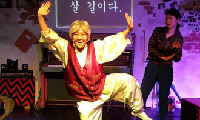|
News The tradition of an Olympic Truce around ancient Games was vital, during times of almost constant war, to allow athletes to safely travel to the Greek city Olympia for the competitions And it was from one of the darkest periods of recent history – the Yugoslav Wars of the 1990s – that the Olympic truce was re-born with the aim of helping find peaceful solutions to modern conflicts The first modern Olympic Truce project resulted in athletes from the former Yugoslavia being allowed to compete under the Olympic flag at the Barcelona 1992 Games, after negotiations between the International Olympic Committee (IOC) and United Nations (UN) Since then, the truce has become a biennial fixture at the UN General Assembly, promoting peace and protecting athletes and sport in the run-up to each edition of the Games Parallel, continuous projects are created, using the Olympic values to support international development and cooperation around the world One year after the success of the Barcelona 1992 initiative, the first Olympic Truce resolution – for the Lillehammer 1994 Winter Games – was approved at the 48th UN General Assembly It said:“The goal of the Olympic Movement is to build a peaceful and better world by educating the youth of the world through sport, practised without discrimination of any kind and in the Olympic spirit, which requires mutual understanding, promoted by friendship, solidarity and fair play ”Athletes from North and South Korea paraded under a single flag at the Sydney 2000 Games (Photo: Getty Images/Jed Jacobson) The UN secretary-general repeats this appeal to the organisation’s member states before each Summer and Winter Olympic Games, calling for athletes to be protected and encouraging diplomatic solutions to conflicts The text is rewritten before each Games, through a partnership between the IOC, the local organising committee and United Nations Sport for Development and Peace (UNOSDP) The resolutions call for a halt to conflicts from seven days before the Olympic Games opening ceremony until seven days after the Paralympic Games closing ceremony The UN member states that agree sign the document London 2012 was the first Games that achieved a 100 per sign-up Despite not definitively ending conflicts, the truce sets precedents for possible diplomatic negotiations and for humanitarian aid to be sent to people This occurred in 1994, when after the UN wrote to heads of state about the Olympic Truce, the IOC sent a delegation to Sarajevo, the host city of the 1984 Winter Games, which was suffering intensely during the Yugoslav Wars This visit was designed to alert the world to the Balkan conflict, and also to establish a pause to enable aid to get to the population – it is estimated that approximately 10,000 children were vaccinated on a single day Making a real difference The same appeal also contributed to a ceasefire in the war between the Sudanese People’s Liberation Army and the Sudanese government, and to a suspension of hostilities between Georgia and Abkhazia Another key moment happened in 2000, when a paragraph about the Olympic Truce was included in the UN Millennium Declaration, signed by 150 countries and supported by many important international figures, including Nelson Mandela and Bill Clinton The role of sport in promoting peace is not restricted to just a few days of truce To help spread development through sport during each Olympiad (the four-year cycle between each Summer Games), a series of projects – generally linked to issues regarding gender equality, youth development, health, inclusion and peace – are carried out Since 2000, the International Olympic Truce Centre, founded by the IOC, has had the mission of continuously promoting the Olympic ideals, through educational and sports programmes Organising committees also create specific initiatives, such as London 2012’s International Inspiration programme that benefited more than 12 million young people in 20 countries Read more about the Olympic Truce |
The Olympic Truce: from darkness, a modern movement for peace is born
August 29, 2016
VIEWED: 0






